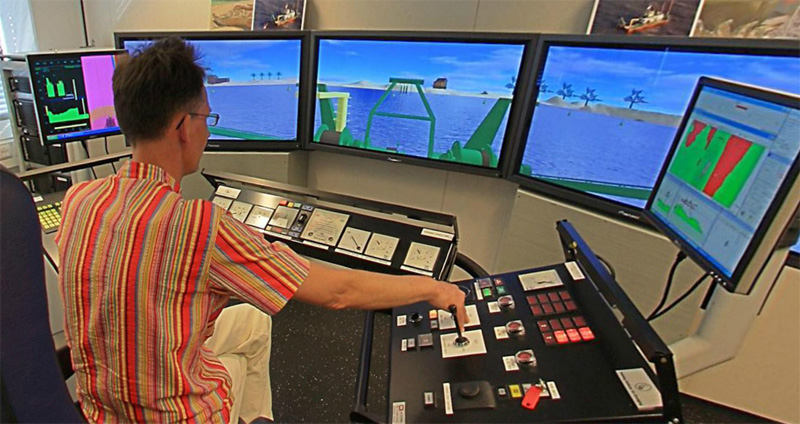When you think about virtual training simulators you probably picture pilots training to operate an aircraft, but training simulators are becoming more common in just about every industry where training can be costly and risky for mission-critical tasks. If your equipment is costly, the consumables it relies on are expensive, and the work can be dangerous – then there’s a good chance a training simulator is right for you. Take for example dredging, probably not the first industry that comes to mind when you think of 3D training simulators, but think again.
Dredge Technology Corporation (DTC) offers virtual dredging training via a Beaver 6518 cutter 3D simulator that allows trainees to practice for scenarios they’ll face in the real-world, in a safe controlled virtual environment. Operators are able to train in a variety of simulated conditions, without the need to create potentially hazardous situations, and without incurring any production loss.
 |
| Cutter Suction Dredger Simulator Training |
Earlier this month the Training Institute for Dredging (TID) organized the India Dredging Experience, enabling visitors to operate their Beaver 6518 simulator, allowing them to experience first-hand the benefits of simulation-based training. TID claims that the simulator helps to improve key performance indicators, leading to higher uptime rates and a decrease in cost per cubic meter. TID also organized the India Dredging Competition, where participants compete against each other, using the simulator to dredge a harbor channel entrance as fast and efficiently as possible.
Earlier this year DTC conducted their first US-based simulator-based dredging training sessions in Clearwater, Florida. The training simulator sessions were attended by Fortune 500 dredging and construction companies including Mosaic and Manson.
Simulator-based training has opened up a new educational application model in dredging, among a number of other industries as well. By including simulation-based training into curriculums, early adopters will see a number of benefits. The improvement of skills and techniques coupled with the cost savings returned by well-trained operators who make fewer mistakes easily outweighs the cost of developing a training simulator. If you’re responsible for training people to operate machinery that is expensive, costly to maintain, and has the potential to create hazardous conditions, a training simulator may be just what you’re looking for to give your organization the upper hand.
![]() Contact us on ForgeFX
Contact us on ForgeFX ![]() Get updates on Facebook
Get updates on Facebook ![]() Get tweets on Twitter
Get tweets on Twitter ![]() Connect on LinkedIn
Connect on LinkedIn
